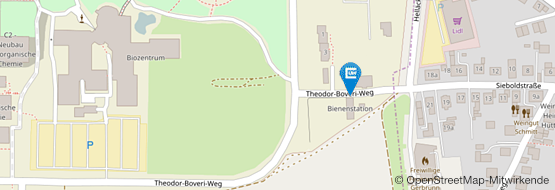Rother, Lisa
Lisa Rother
Biozentrum
Am Hubland

Many insects use the polarization pattern of the sky for spatial orientation and navigation. That ability has been investigated on a behavioral level for example in honeybees. The underlying system has been characterized anatomically and physiologically for example in locusts and fruit flies. In bumblebees, on the other hand there are only a few studies, even though they appear to be an excellent model organism as central place foragers. To this end, my research focuses on the neuronal mechanisms of the celestial compass system in bumblebees (Bombus terrestris). By presenting simulated skylight cues (polarized light representing the sky and an unpolarized green light spot representing the sun) in a dynamic manner, I will investigate the history dependency and flexibility of the neural tuning in the bumblebee’s central-complex.
Current research projects are:
- Dependency of polarization tuning on rotation direction and velocity.
- Dependency of polarization tuning on spiking history.
- Dependence of velocity-dependent response dynamics on the type of stimulus.
-
Walking bumblebees see faster. . In Proceedings of the Royal Society B, 290, p. 20230460. 2023.
- [ URL ]
-
A micro-CT-based standard brain atlas of the bumblebee. . In Cell and Tissue Research, 386, pp. 29–45. 2021.
- [ URL ]
-
Serotonin transporter genotype modulates resting state and predator stress-induced amygdala perfusion in mice in a sex-dependent manner. . In PLOS ONE, 16(2), pp. 1–22. Public Library of Science, 2021.
- [ URL ]




